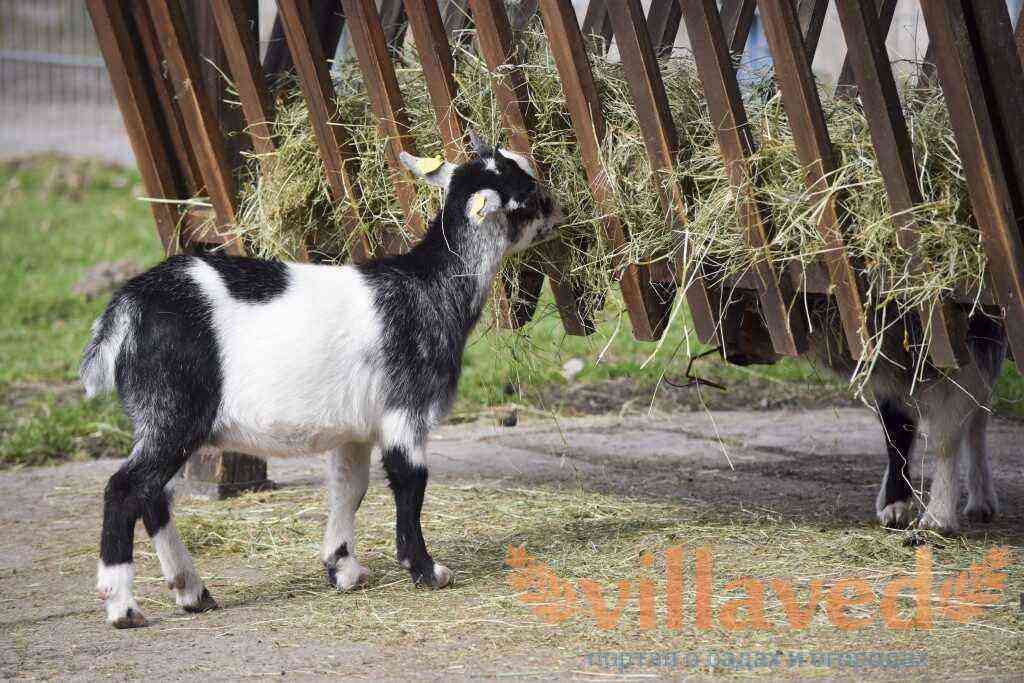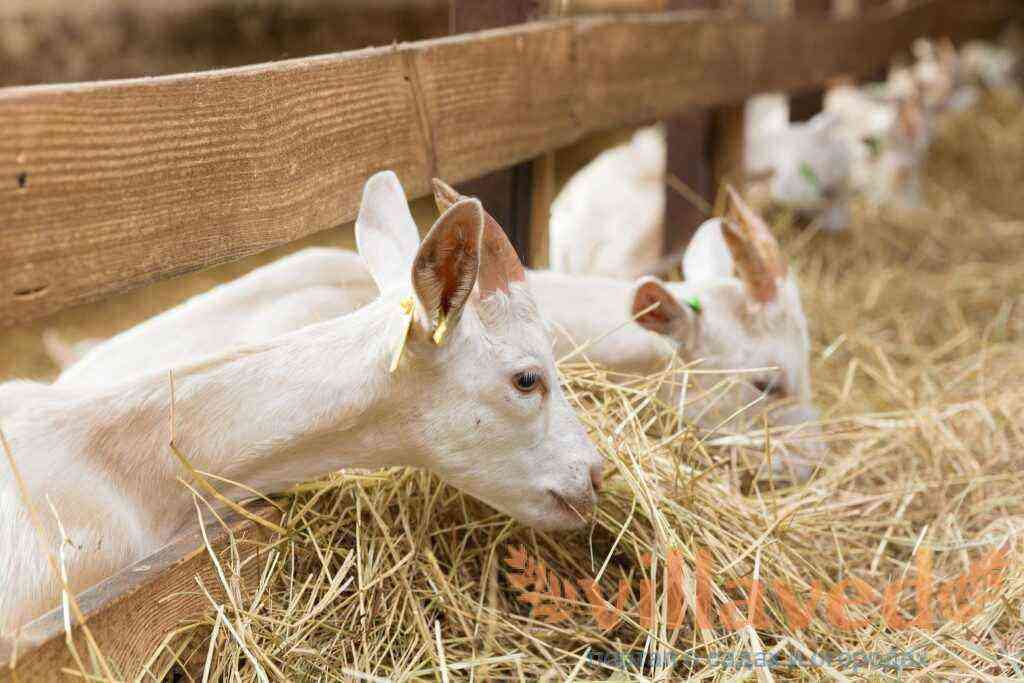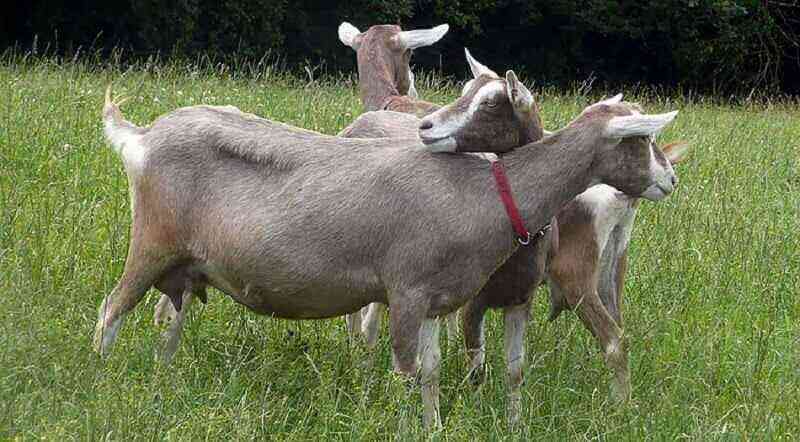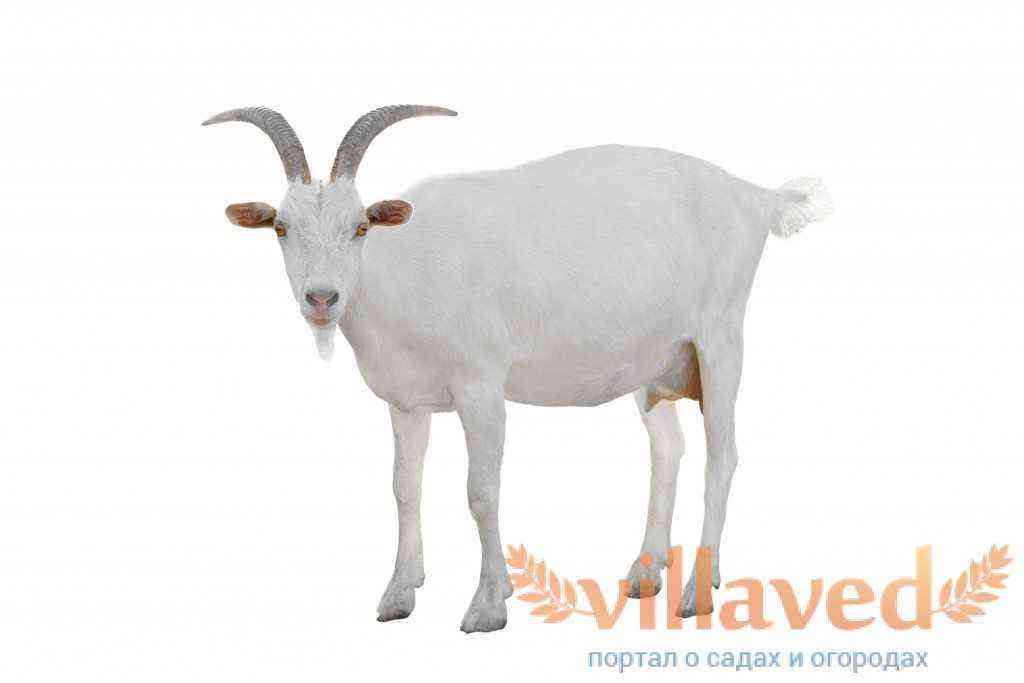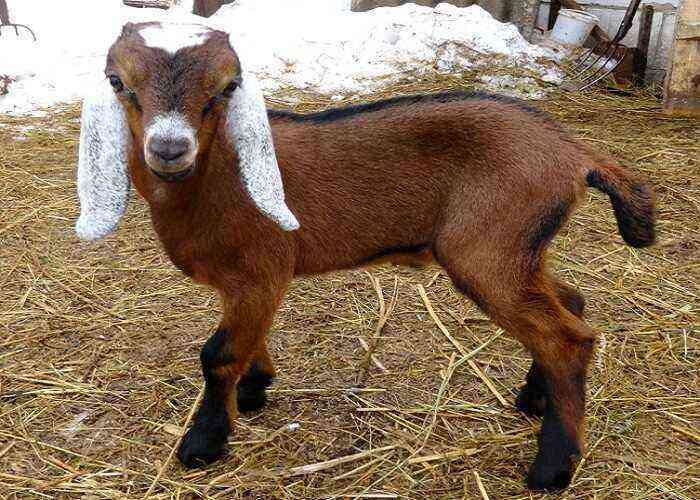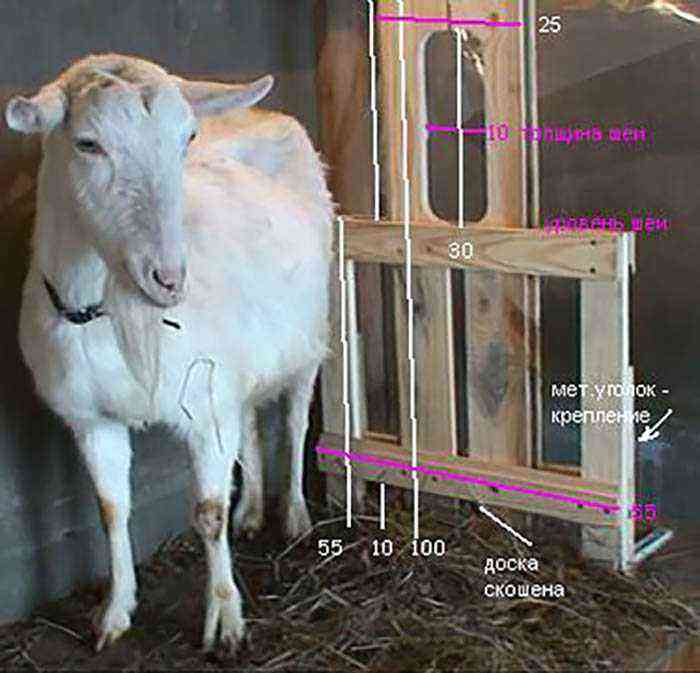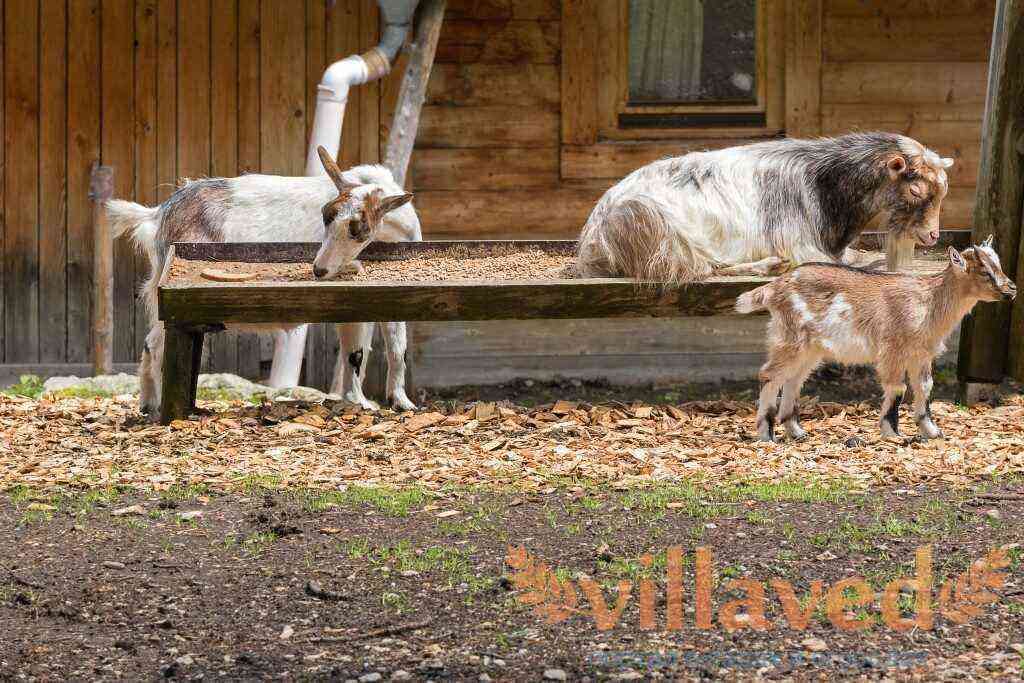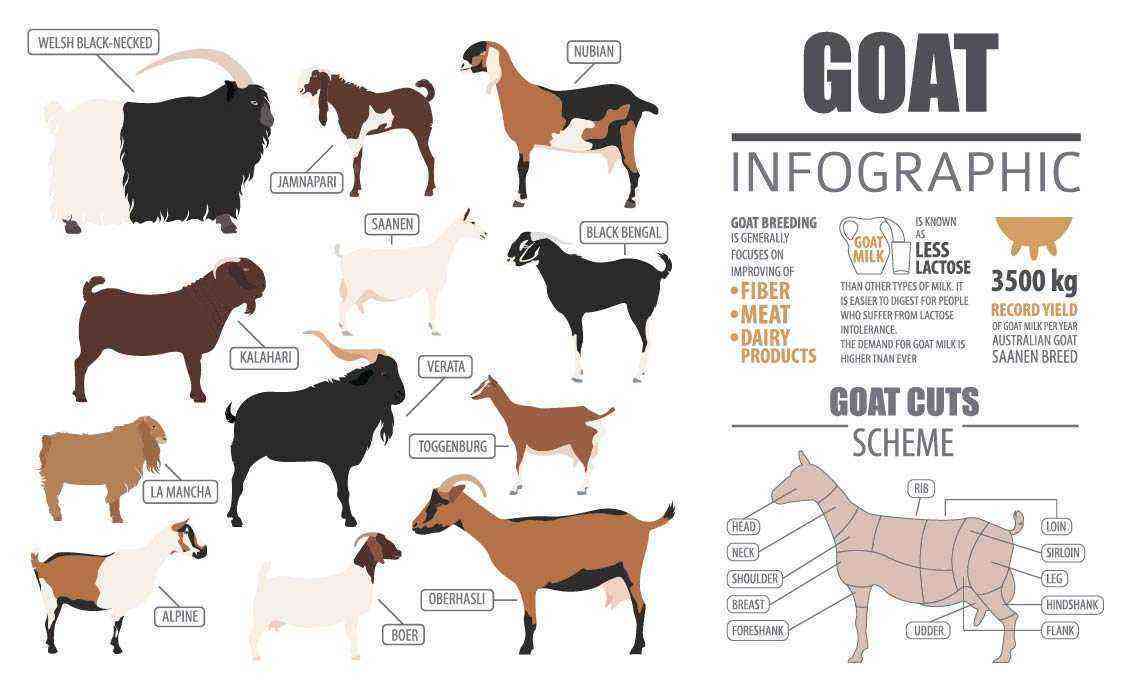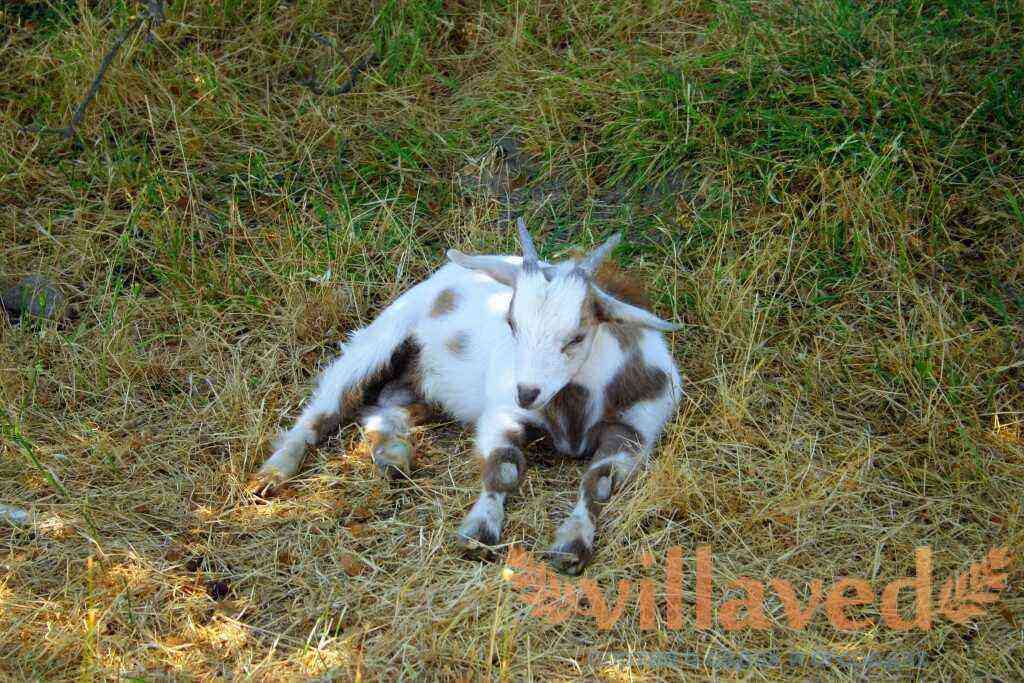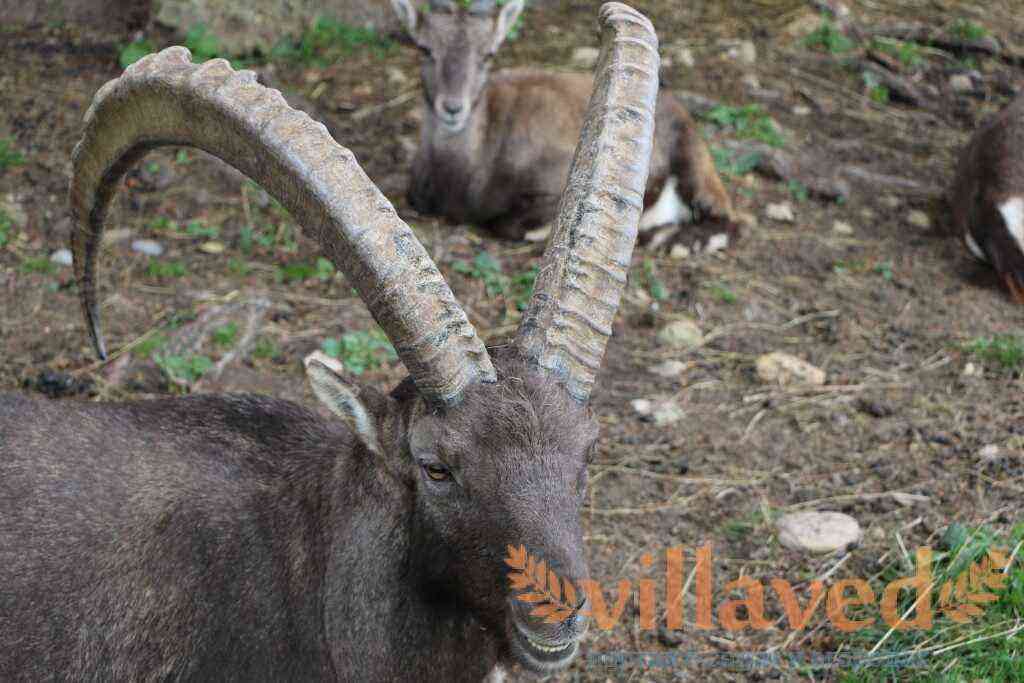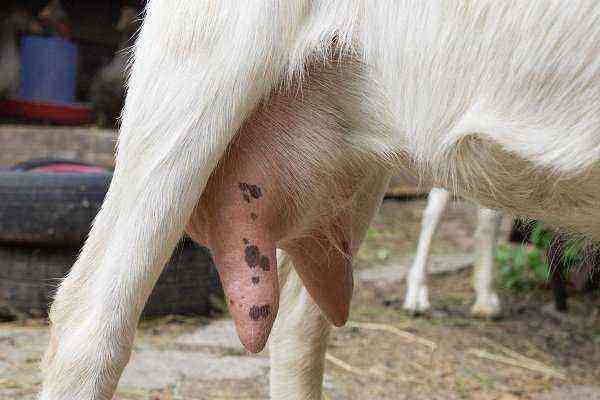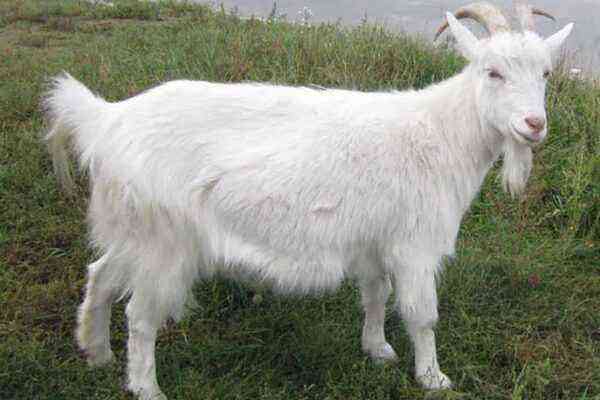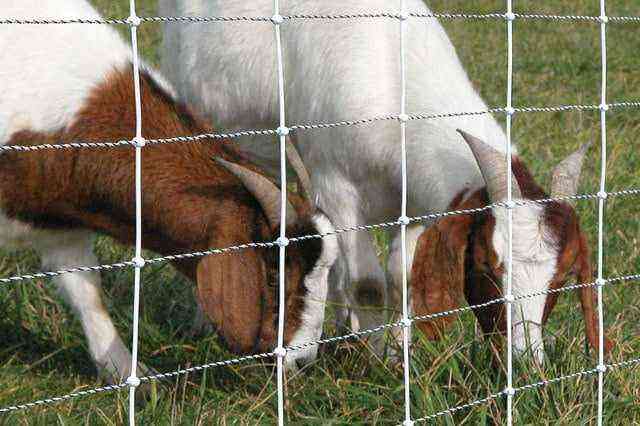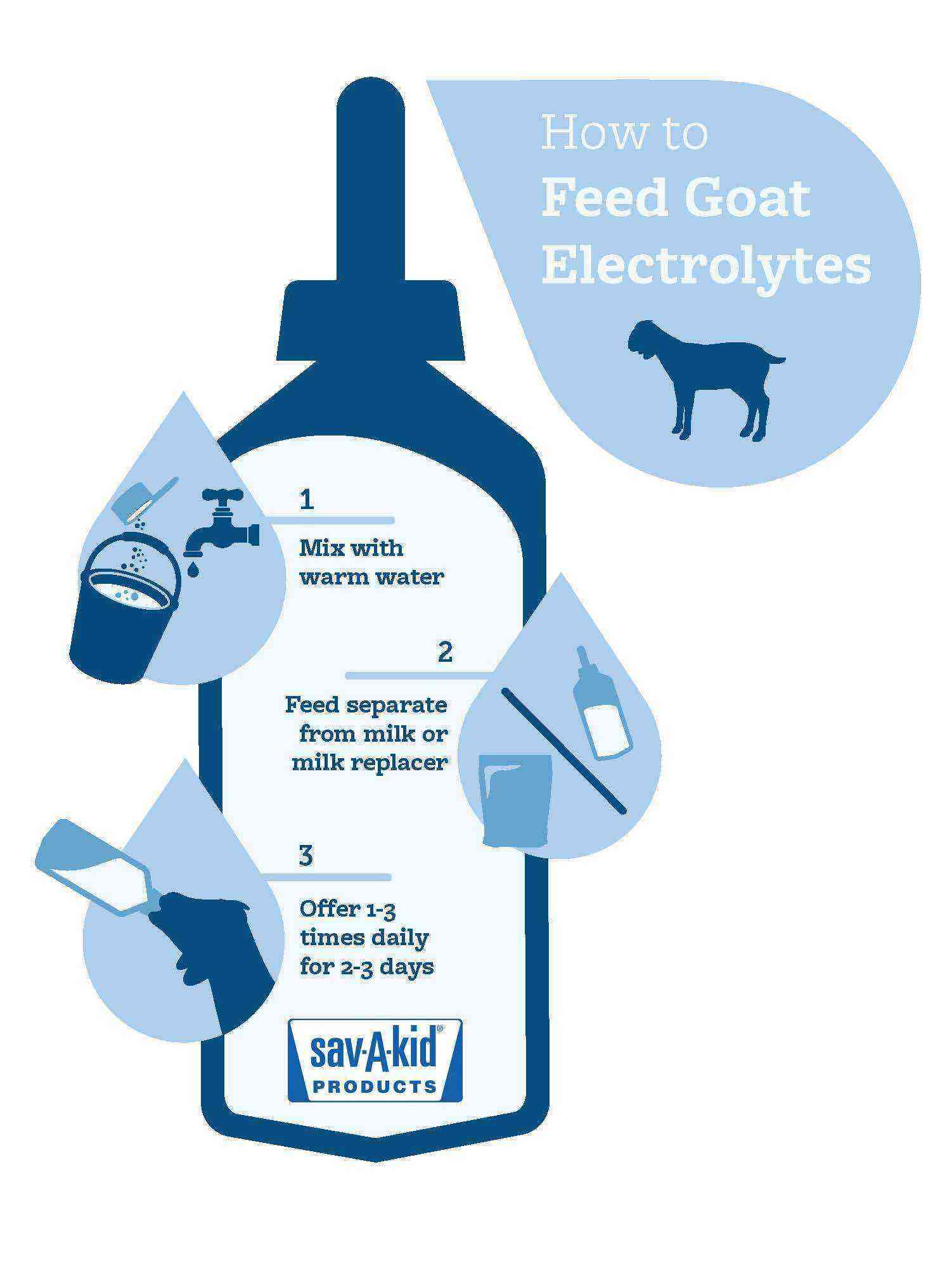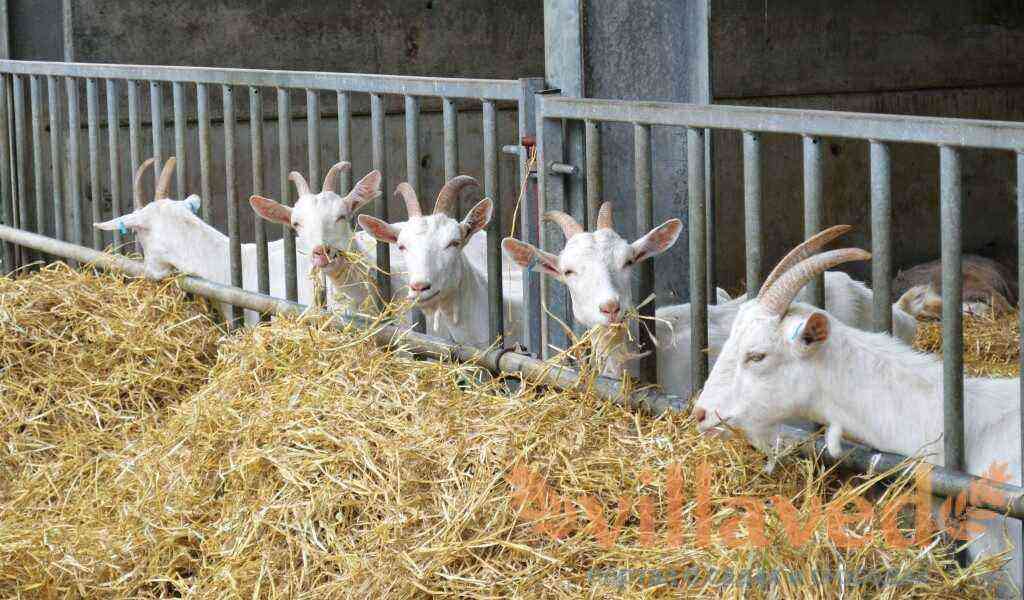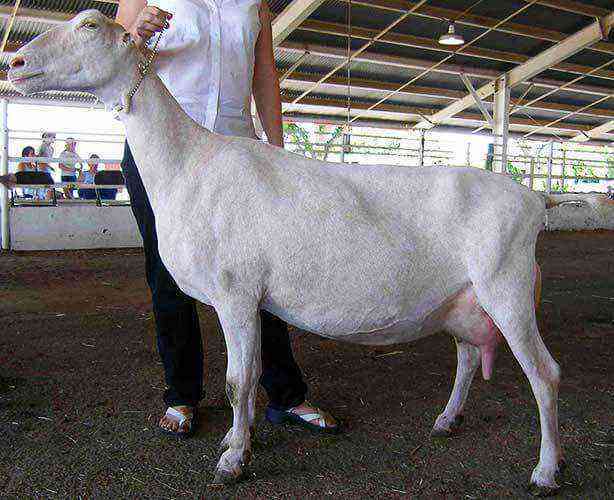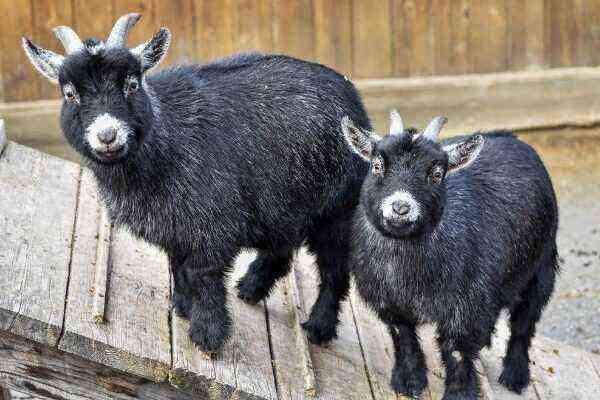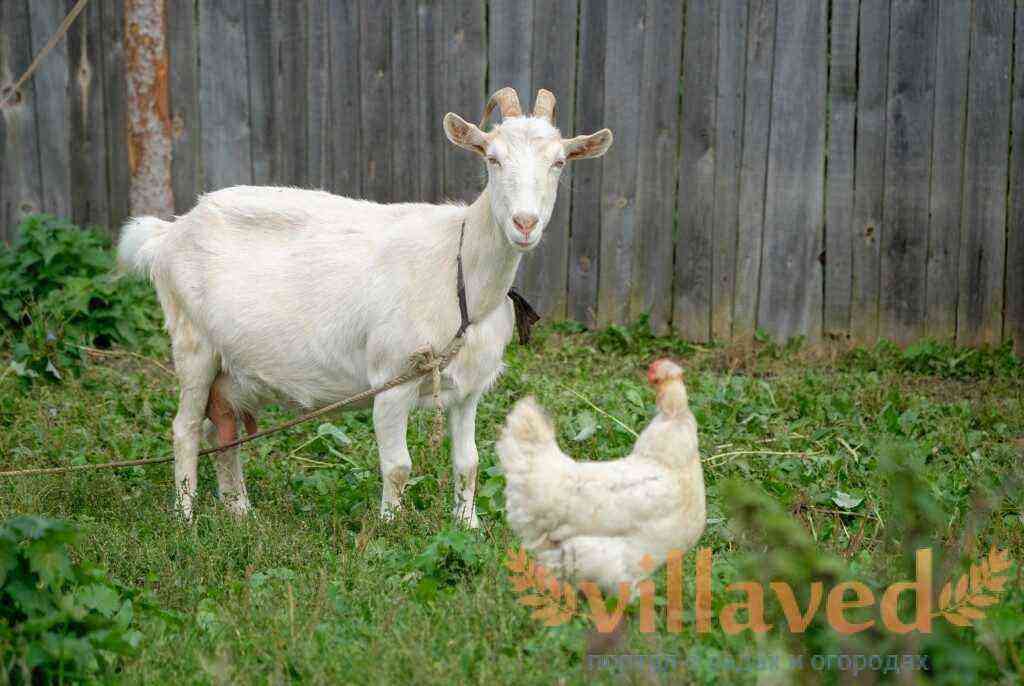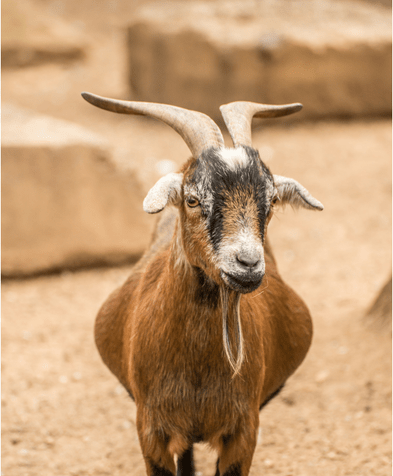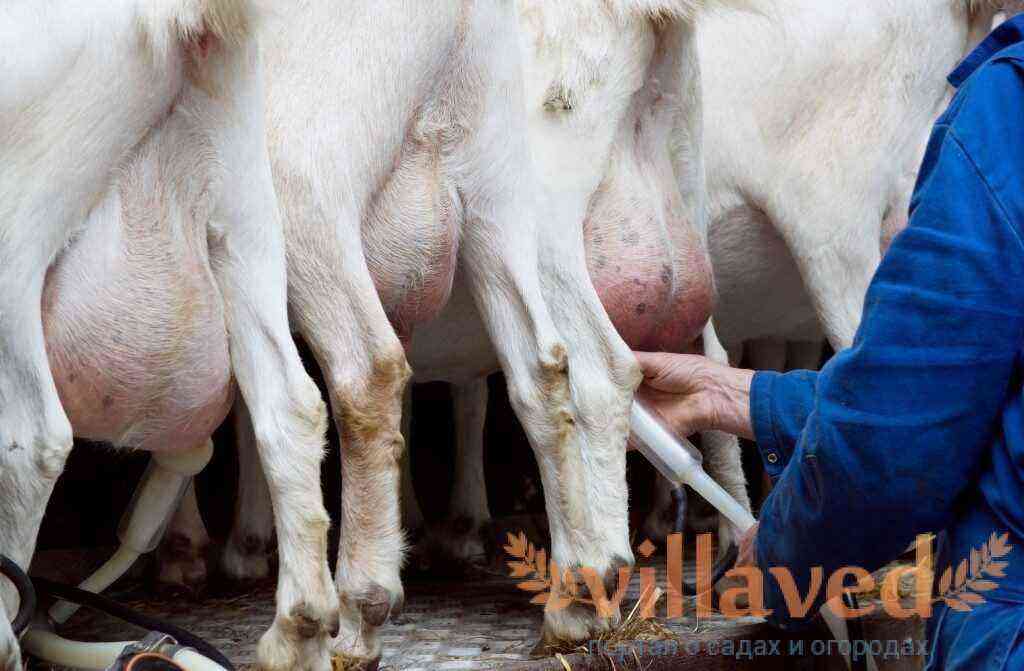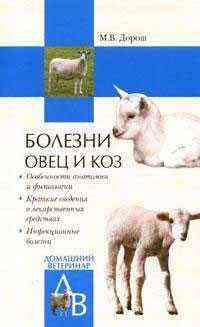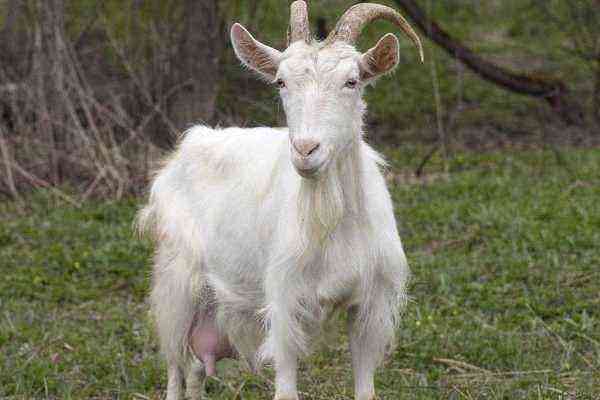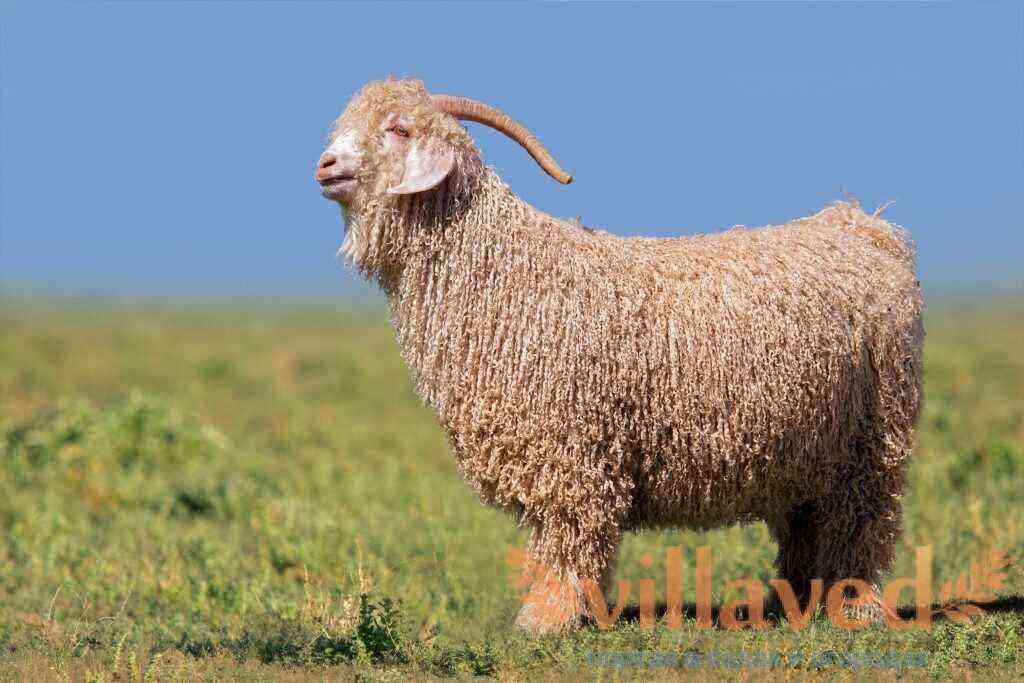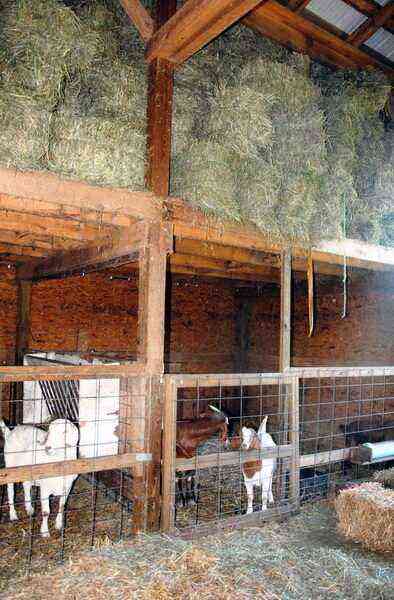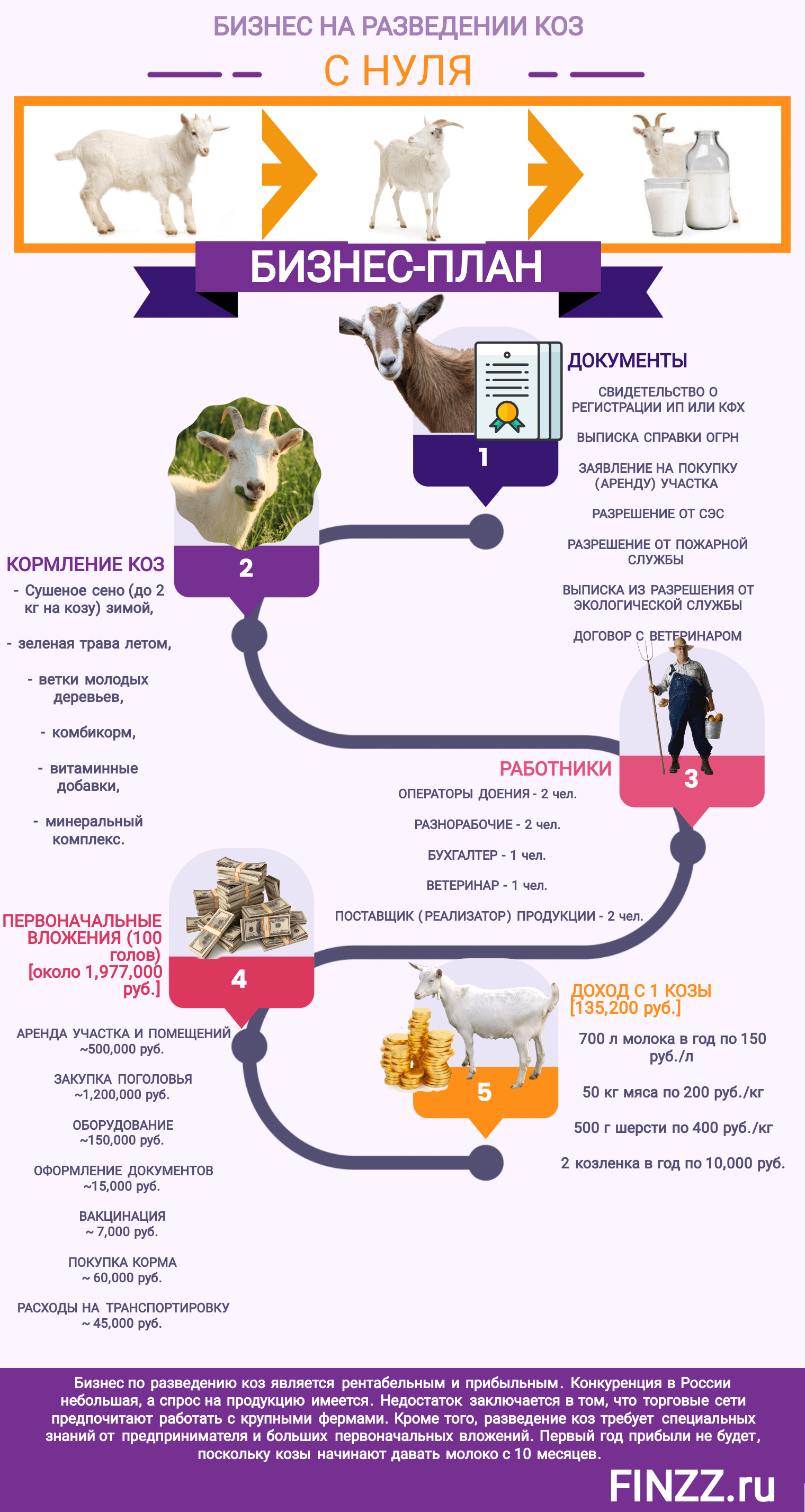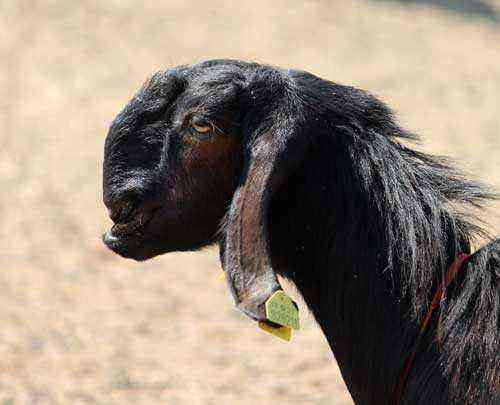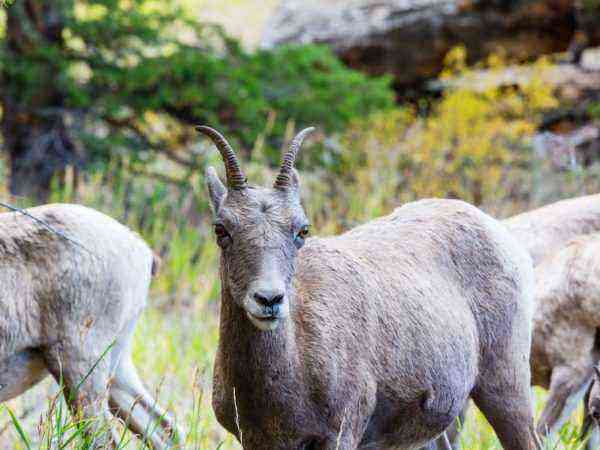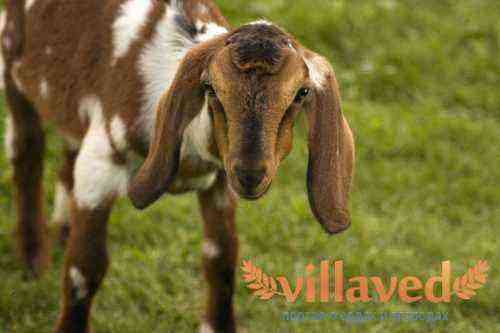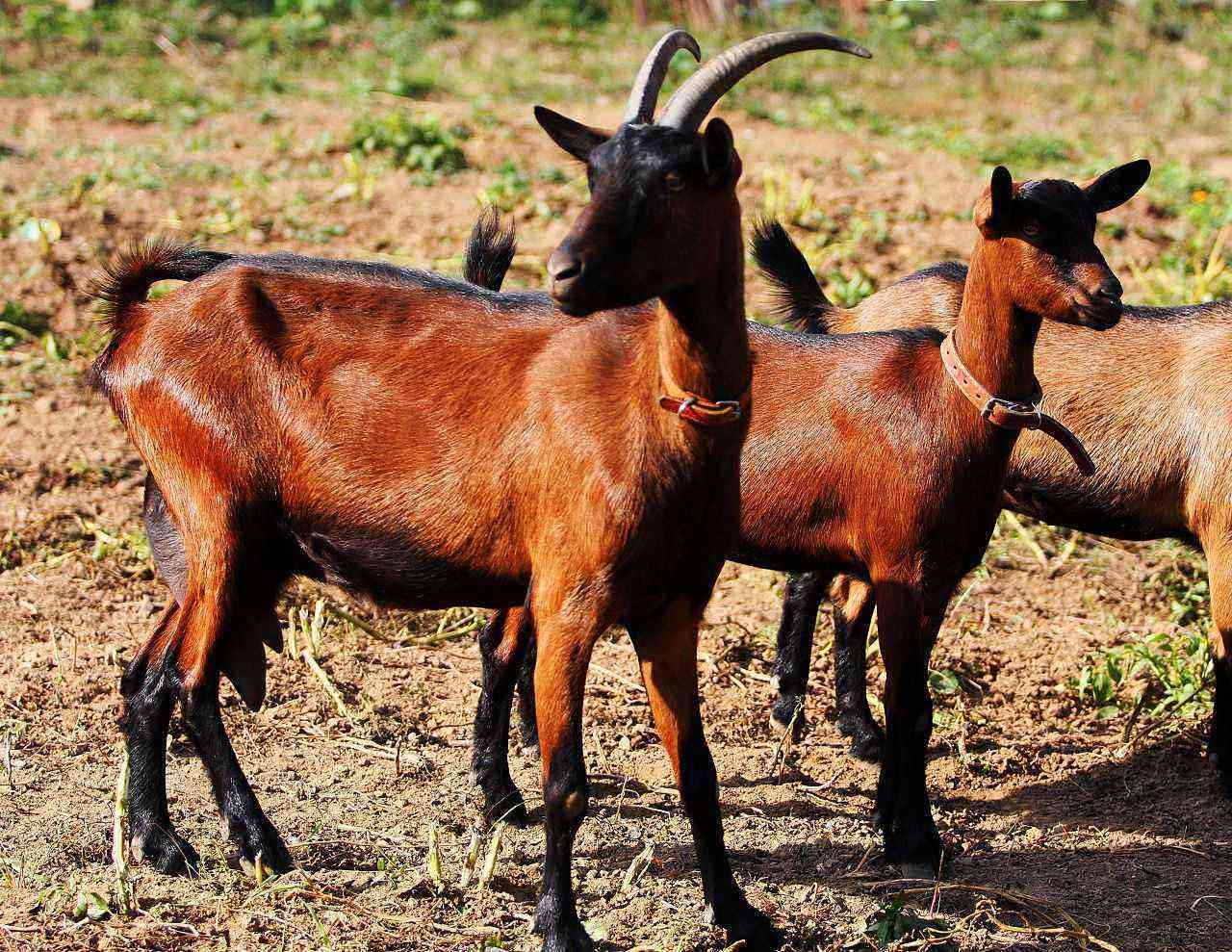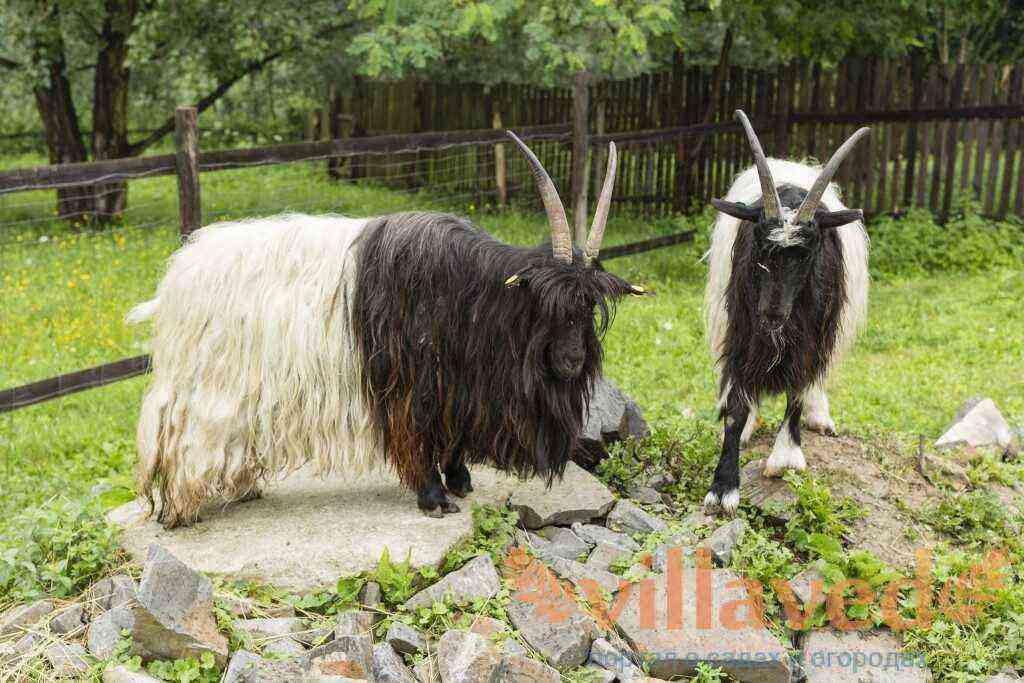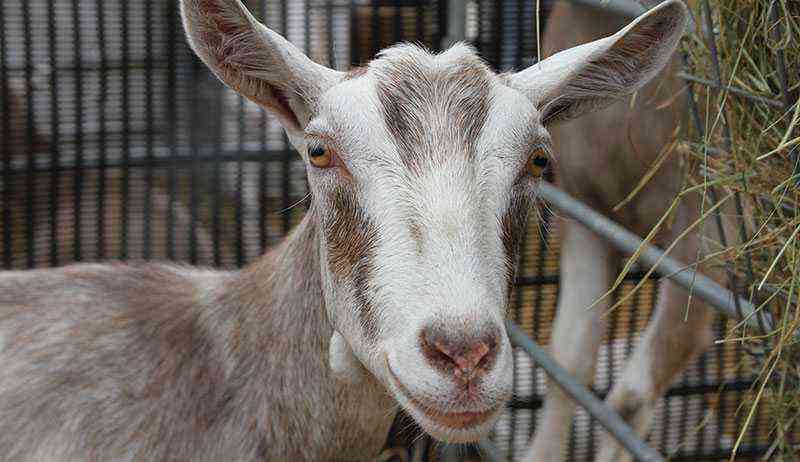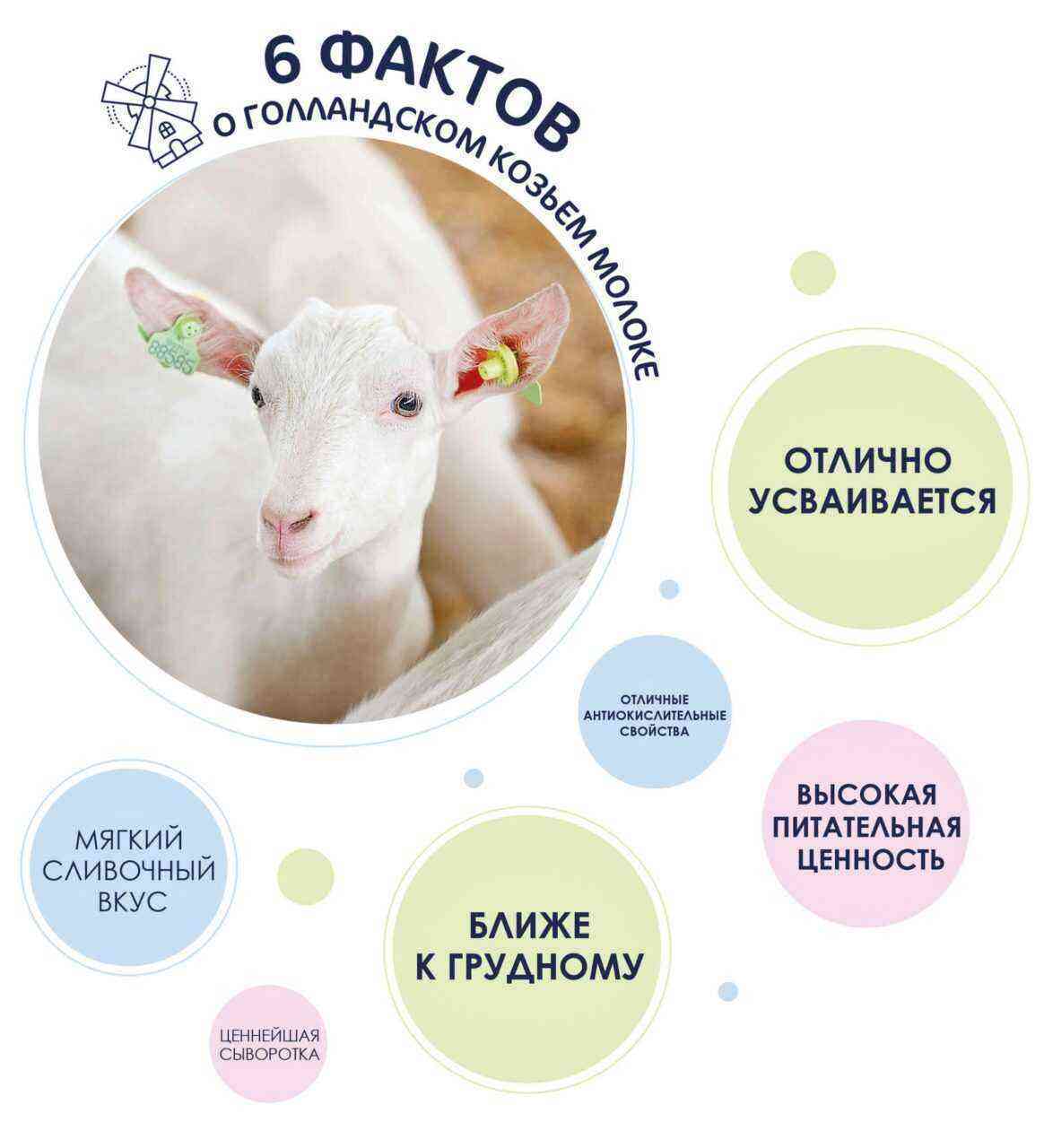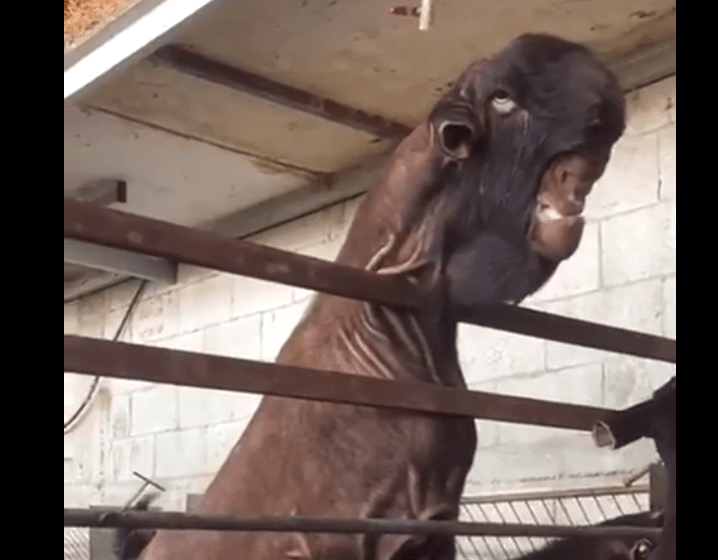Domestic goats have been one of the most popular pets for centuries. Agricultural and goat breeding is a simple matter, even for novice farmers. You can keep goats in small household plots. Before you get animals, you should learn about the main existing breeds, the conditions for their maintenance and feeding. It is not bad to get acquainted with the peculiarities of reproduction and care of goats, whose age is less than three months.
Goats
The content of the article:
Goat breeds
To date, more than two hundred goat breeds are known. Within each, new subspecies and lines with improved product characteristics, polled and horned, have been bred. All breeds of goats are divided into downy, dairy, woolen or meat productivity, and decorative. There are mixed varieties, for example, milk-meat, milk-wool, etc. More than half of goat breeds belong to the dairy direction. Here are the most popular:
- Saanen polled
- Russian white goat
- Toggenburg breed
- Megrelian
- Alpine goat
- Cameroon breed
- goat lamancha
- Nubian goat breeds
Dairy goats are quite large, developed udder, short hair of poor quality. On average, per year they give from 350 to 1200 liters of milk with 4-5% fat content. The lactation period in goats lasts 260-300 months a year. This is the most favorite direction in the household.
Downy goats of strong constitution with powerful hooves. The coat has a downy lining and a strong awn, there is little transitional hair. Here are the main types of downy goats:
- Orenburg
- Gornoaltayskaya
- Black downy goats
- Pridonskaya
- Turkmen
- Goat Chegu
- Kyrgyz
- Volgograd downy goat.
The main advantage of woolly goats is semi-thin and semi-coarse wool (mohair), more than 20 centimeters long. We have three popular breeds:
Meat-oriented goats are grown exclusively for obtaining tasty meat, reminiscent of lamb. They are all large, with a broad chest and a voluminous belly, a large head. They grow quickly, they give little milk, only for feeding goats. Here are the main breeds:
- Kiko
- Greek
- Boer goat
- Bashkir or Tatar breed
There are also decorative types of domestic goats, which are bred for the entertainment of people. Among them, the most famous are the fainting and Cameroon pygmy goats. When choosing a breed, you should pay attention not only to the direction, but also to the origin. Afghan or Moroccan goats from South America take root perfectly in Central Asia, but are not suitable for the cold Russian climate. It is better to choose Alpine, Tibetan or Altai breeds for home breeding.
Goat room
Before you get goats in your household, you should build a house for them. You can find a description and photo of a goat barn, or create a project with your own hands. The room for goats is placed in an open, slightly elevated and dry place. It should be quiet, noises and sharp sounds of goats can scare. I arrange windows and doors so that there is no draft in the barn. Windows are made on the south side, at a height of 1,5 meters from the ground. For every square meter of goat’s rue area, a square meter of window is needed. Doors must open outwards. Be sure to equip a threshold, 15-17 centimeters high, so that manure does not fall out. The floor is slightly tilted, small grooves are made on both sides to drain liquids.
A goat barn can be wooden (it is warmer) or stone. If the room is made of stone or brick, it is covered with roofing felt or tal on top so that there is no dampness. The floor is made of concrete, wood is too expensive. On the sides, at a height of 30-40 centimeters, small shelves (60 cm wide) are equipped, as the goat sleeps lying down. In height, the barn is built no more than 2,5-2,8 meters, high rooms do not warm up well. The roof is protected from moisture penetration, covered with moss or covered with clay. The attic is made small, litter is laid there. Feed should not be stored under these conditions, they pick up the smell of fumes, and goats do not eat them.
Be sure to provide an exhaust hood in the barn. Square pipes are placed on top to remove fumes, and holes are made at the bottom for fresh air to enter. For 10 goats, one exhaust channel is made with an area of 35 by 35 cm, a height of 4-6 meters. Feeding troughs can be placed both under the walls and in the center. In the first case, the stalls are located in the center of the room, in the second – along the walls. The area of the stall for one goat is 100 × 200 centimeters. The total area of the goat’s rue is calculated depending on how many heads live there. For a female with kids, 2 m² is needed, for a goat, whose age is from six months to a year, – 0,6-08, m², for an adult goat – 2 m². and for a young one-year-old goat – 1 m².
Conditions of detention
The temperature in the barn should range from 18 degrees in summer to 6 degrees in winter. If the age of the kids in the herd is less than three months, the temperature in the barn should not fall below 12 degrees. Goats do not like dampness, so the humidity in the room should not be higher than 75%. Watch the walls carefully so that they do not start the appearance of the fungus. The wooden floor is covered with straw. Peat can be laid on concrete. In summer, it is good to make bedding from fern leaves, it is allowed to use sand on the farm. From 300 to 500 grams of straw flooring should fall on one goat. When it is not enough, goats suffer from rheumatism.
,HwhKBzm8398,44JhK9pQPug
The barn manure is cleaned daily. In winter, this can be done every other day to keep warm. Thorough cleaning of the premises is carried out twice a month. Goats themselves, especially long-haired ones, should be cleaned every day, although this is not a pleasant occupation. The goats themselves should be brushed every day, while the long-haired goats should be combed with a coarse brush. Once a week they are washed with a solution of baking soda. Be sure to periodically treat the wool with lice. The udders of dairy goats are washed before milking. The cleaner the animals, the tastier and more aromatic her milk will be. Scabies, fleas and other parasites will not be terrible for her.
Useful care of hooves, as they are prone to disease and deformities. The dirt between the hooves is cleaned as needed. Too large hooves are trimmed, this is especially true for goats that constantly live indoors. But even those who practice closed goat breeding are advised to periodically release animals into a paddock or take a walk outside. This does not affect productivity in any way, but it improves the health of the livestock. After walking, the domestic goat sleeps better, renews its strength and gives more milk. In addition, her goat hooves are erased, their shape does not deteriorate.
It is important to monitor the condition of the teeth so that they do not have plaque, black spots. Cattle eat solid feed, so chewing is an important process for them. If the teeth are sick, the animals stop eating, which negatively affects their productivity. You should pay attention to whether there are discharges from the eyes, whether the pupils are in order, so as not to miss dangerous pathologies such as infections, leukemia, etc.
Goat feeding
A domestic goat animal feels best on free grazing, at least 180 days a year. In summer, they feed themselves, eat about 1-3 kilograms of fresh grass. There are no special requirements for pastures for animals. It is necessary to ensure that the goats do not eat chamomile flowers, tansy, mustard, wormwood, this makes the milk bitter. Horsetail reduces milk yield, and narcissus leaves and bulbs cause poisoning, bloating and stomach problems. Poisonous for goats are wild rosemary, black nightshade, tobacco leaves. Therefore, it is undesirable to launch goats on pastures rich in these plants.
For the winter, one goat needs to prepare 350-500 kg of hay. Be sure to stock up on wood brooms. They are prepared from branches of mountain ash, willow, birch, poplar, dried nettle is suitable. Branch food is high-calorie, it increases lactation and accelerates weight gain. The domestic goat does not eat whole grains, but it needs concentrated feed. Animals eat bran, compound feed, pea flour, chopped corn. The amount of concentrated feed is up to 0,5 kilograms per day. Together with them, a mixture of kitchen waste, potato peels can be added to the feeder. In autumn they feed tops of potatoes, carrots, cabbage leaves. Beet tops are given along with chalk to neutralize organic acids. Goats also need vegetables, they are given in raw chopped form, boiled potatoes. A female cat may require an increase in portions.
Feeders are equipped so that they put food in them without having to wade through a herd of goats. Equip feeders at a height of half a meter from the floor. It is advisable to divide them into two halves. A hay nursery is made from a metal mesh, a wooden container for vegetables and concentrates, mineral additives is equipped below. When the feeders are equipped on the street, they are protected from moisture and precipitation. When food is wet, goats do not eat it. Drinkers are equipped on the opposite wall from the feeders.
Goat breeding
Goat breeding is incomplete if you do not expand the herd. Anyone can do this on their own. Breeding goats for goat breeding are selected according to the food qualities of their mother, since milkiness, weight, quality of wool and down are transmitted through the paternal line. They must be over a year old. Queens for reproduction must have a strong skeleton, the correct body structure, and a developed udder. Mating takes place in late summer or early autumn. Then the kids can be expected in late February or early March. Animals born during this period are stronger, grow in more favorable conditions, begin to eat on their own with the appearance of the first greenery.
For successful mating, it is important that the female is in heat. It is not difficult to determine it, the goat stops eating, is restless, mecks, the external genitalia swell. This period lasts 1-2 days, repeats every 15-22 days. Modern farmers practice both natural and artificial insemination. Puberty in different breeds occurs at different times. The first hunt occurs, in most cases, in six months. But goats can be allowed to mate no earlier than one and a half years (this is the ideal age). Otherwise, the kids will be born weak, the females will develop diseases (prolapse of the uterus, ruptures, blood discharge, etc.). If the female is young, she does not bear kids. Females should not be turned into a machine, fertilizing twice a year.
Goat care
The gestation period for females is about five months (147-150 days), deviations are allowed in both directions within five days. Childbirth lasts within half an hour. A place for a goat with kids should be equipped in advance. The area of the space is made about two square meters, with a temperature of at least 12 degrees. It is important that the place is dry, with properly equipped swill and a feeder. Goats of dairy, meat and mixed breeds, immediately after the wool has dried, are separated from the uterus and transferred to their own stall. Downy goats stay with newborn kids longer. When raising goats, you should provide them with a place to play. Kids, like all goats, are very active. “Girls” here do not put the boys to sleep.
The kids are fed with milked milk through the nipple. The first feeding is carried out an hour after birth. Ten days later, if properly cared for, the goats and goats are already eating from the bowl on their own. Up to a month, young animals are fed four times a day, then they switch to three meals a day. On the twentieth day, a domestic goat can eat compound feed. Give it a little at first, gradually increasing portions. When the kids get used to the concentrated feed, add hay and fresh grass. When the age of 12-13 weeks is reached, goats and goats completely switch to an adult diet, feed on their own.
Goats must be vaccinated. Do vaccinations intramuscularly, according to the schedule. They protect against many diseases. If the head of the animals is not polled, dehornization is carried out, both for kids and adult goats. From an early age, animals should be taught to walk within the courtyard and on the nearest lawn. Also, they should behave calmly on a leash. Raising goats is not difficult if the farmer has even the slightest experience in caring for the young of other animals. The main thing is not to miss anything in the conditions of keeping and feeding. That’s why these animals are so popular. They are no longer called breadwinners for the poor, since their milk is healthy and more expensive than cow’s.
